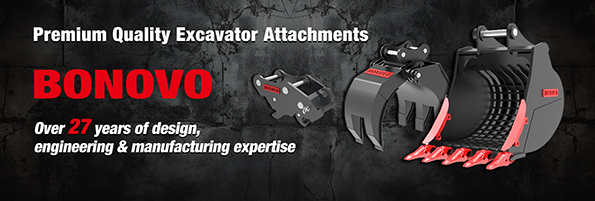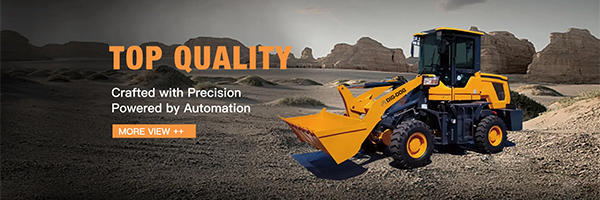1. Hydraulic pump performance degradation
As the power source of the system, the performance of the hydraulic pump directly affects the pressure and flow of the system. When the hydraulic pump has the following problems, the system response will slow down:
Wear: Long-term operation of the components in the pump causes wear and reduces the volumetric efficiency.
Leakage: Internal leakage or increased clearance leads to insufficient or fluctuating flow.
Aging: Gear pumps and vane pumps often have problems with reduced efficiency after long-term use.
2. Hydraulic oil quality problems
Hydraulic oil is a hexin medium for power transmission, and its viscosity, purity and cleanliness are crucial to system performance:
Contamination: impurities or water are mixed in, affecting the fluidity of the oil.
Oxidation: The oil ages or deteriorates, and the flow resistance increases.
Air mixed in: bubbles are formed, causing cavitation, affecting the life of components and system response.
3. Hydraulic valve failure
Hydraulic valves are responsible for regulating the flow direction and flow of fluids. The following problems may cause slow system response:
Stuck or blocked: The valve core is blocked by impurities, resulting in insensitive movement.
Solenoid valve failure: coil damage or circuit problems, unable to accurately control the valve.
Wear: Long-term use leads to reduced sealing or component failure.
4. The presence of air inside the system
Poor sealing or improper maintenance of the hydraulic system can easily lead to air entry. Since air is compressible, its presence will reduce the transmission efficiency of the system, and even cause cavitation, damaging key components such as pumps and valves.
5. Internal leakage of the hydraulic cylinder
As an actuator, the sealing performance of the hydraulic cylinder directly affects the sensitivity of the piston action:
Aging or damage of the seal: oil leakage, resulting in insufficient thrust.
Cylinder wear: internal leakage intensifies, oil temperature rises, and component aging accelerates.
6. Load exceeds system capacity
If the actual load of the system exceeds the design range, it will cause the response speed to decrease, or even fail to complete the work. Long-term overload operation will also aggravate the loss of components and reduce overall performance.
Troubleshooting and solutions for slow response of hydraulic system
1. Check whether the load exceeds the system design range
Operation steps:
Ensure that the equipment workload is within the design range, and reduce the load or upgrade the system configuration if necessary.
Preventive measures:
Reserve a higher load margin during the design phase to adapt to frequently changing working conditions.
2. Adjust the system pressure setting
Operation steps:
Check whether the overflow valve setting meets the requirements, and increase the pressure appropriately if necessary.
Use a pressure gauge to detect the system to ensure that there is no leakage or abnormality.
Solution:
Repair the leaking parts and keep the pressure within the standard range.
3. Replace or purify the hydraulic oil
Operation steps:
Check the degree of contamination of the hydraulic oil, and replace the oil that meets the system requirements if necessary.
Clean the oil tank, pipelines and filters to avoid impurities or bubbles.
Recommendation:
Use a high-efficiency filter to ensure that the hydraulic oil is clean and prevent secondary contamination.
4. Remove air from the system
Operation steps:
Check the sealing of the system and repair the leaking parts.
After system maintenance or oil replacement, fully exhaust the air to ensure that there are no bubbles.
Preventive measures:
Check the status of the seals regularly to ensure that there is no oil or air leakage at the interface.
5. Check the hydraulic valve
Operation steps:
Clean the valve core to ensure flexible operation and avoid accumulation of impurities.
Check the circuit system of the solenoid valve and repair or replace the faulty parts.
Solution:
Replace the valves with severe wear to improve the flow regulation accuracy.
6. Check the hydraulic cylinder and seals
Operation steps:
Check whether the seals are aging, worn or cracked.
Check whether the cylinder is leaking or the internal wear is serious.
Solution:
Replace the damaged parts and repair or replace the hydraulic cylinder if necessary.
7. Check the performance of the hydraulic pump
Operation steps:
Use a flow meter to detect the output flow and pressure of the pump.
Check whether the pump has wear, leakage or aging problems.
Solution:
Overhaul or replace the pump with severe wear and lubricate the rotating parts regularly to ensure its normal operation.
Choose DIG-DOG for high-quality, customizable brush cutters for skid steers with fast delivery. Contact us today to discover how our superior products can enhance your land management tasks!
for more info just visit our website at www.dig-dog.com
contact # : +86 158 6218 2088
email : sales@bonovogroup.com
How to solve the problem of slow or unstable hydraulic system response?
- DIG-DOG
- Counselor
- Posts: 655
- Joined: Oct 20th, '24, 22:38
- Location: China

